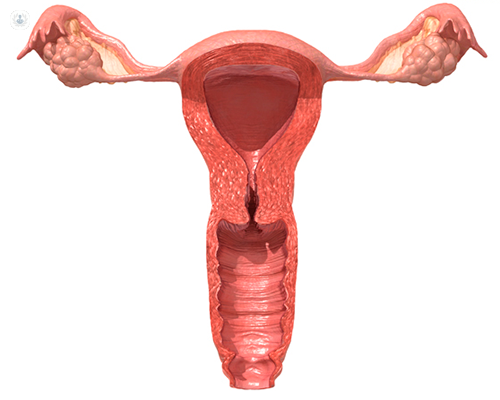


What is a hysterosalpingography (HSG)?
A hysterosalpingography (HSG), also known as an uterosalpingography, is an X-ray scan of a woman’s uterus and fallopian tubes using a special type of X-ray called fluoroscopy and a contrast material. Fluoroscopy is a type of X-ray that allows the radiologist or gynaecologist to see the internal organs in motion which can help to determine their functioning.

What does a hysterosalpingography consist of?
This can be a performed as an outpatient procedure and involves lying down on an examination table, similar to a gynaecological exam, underneath an X-ray imager (the fluoroscope). Next a speculum is inserted into the vagina to keep the cervix open for the duration of the scan. Following this, the cervix will be cleaned by the gynaecologist and a catheter is inserted into the cervix, and the speculum removed.
Next, the contrast material fills the catheter and the fluoroscope will take images. These images will show the outline of the uterus and fallopian tubes and how the fluid moves through them. Once the images have been taken, the catheter is removed. This usually takes up to 30 minutes.
Why is a hysterosalpingography done?
A hysterosalpingography is most commonly used to examine women having difficulty getting pregnant. The hysterosalpingography can determine whether there are any blockages in the fallopian tubes, which could be preventing sperm from reaching an egg, or a fertilised egg reaching the uterus. An HSG can also check for tubal ligation, and can also be used to check for tumour masses, uterine fibroids or adhesions.
Preparation for a hysterosalpingography:
You will be advised to take over-the-counter painkillers an hour prior to the procedure. You will have to remove all jewellery before the procedure too.
What does it feel like during the test?
You should only feel slight discomfort during a hysterosalpingography, with potential cramping when the catheter is inserted and the contrast material injected. It is not uncommon for women to have light vaginal spotting for a few days following the procedure.
What do abnormal results mean?
A radiologist will analyse and interpret the images taken, and will share a report with your specialist. Your specialist will then discuss your results with you and explain if any further tests are required. If the results indicate that your fallopian tubes are blocked, then you might require a laparoscopy to confirm this. Treatments and fertility treatments, such as IVF, may be discussed based on your results.